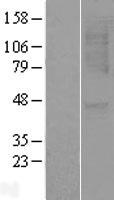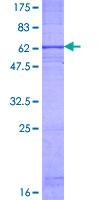order histories, retained contact details for faster checkout, review submissions, and special promotions.
Forgot password?
order histories, retained contact details for faster checkout, review submissions, and special promotions.
Locations
Orders Processing,
Shipping & Receiving,
Warehouse
2 Shaker Rd Suites
B001/B101
Shirley, MA 01464
Production Lab
Floor 6, Suite 620
20700 44th Avenue W
Lynnwood, WA 98036
Telephone Numbers
Tel: +1 (206) 374-1102
Fax: +1 (206) 577-4565
Contact Us
Additional Contact Details
order histories, retained contact details for faster checkout, review submissions, and special promotions.
Forgot password?
order histories, retained contact details for faster checkout, review submissions, and special promotions.
CXCR1
chemokine (C-X-C motif) receptor 1
CXCR1 is a member of the G-protein-coupled receptor family. This protein is a receptor for interleukin 8 (IL8). It binds to IL8 with high affinity, and transduces the signal through a G-protein activated second messenger system. Knockout studies in mice suggested that this protein inhibits embryonic oligodendrocyte precursor migration in developing spinal cord. This gene, IL8RB, a gene encoding another high affinity IL8 receptor, as well as IL8RBP, a pseudogene of IL8RB, form a gene cluster in a region mapped to chromosome 2q33-q36.
| Gene Name: | chemokine (C-X-C motif) receptor 1 |
| Family/Subfamily: | GPCR , Chemokine |
| Synonyms: | CXCR1, C-C, Chemokine c-x-c receptor 1, CKR-1, CMKAR1, CD128, CD181, CD181 antigen, CXCR-1, CXC-R1, IL-8R A, Il8 receptor a, Interleukin 8 receptor a, Interleukin 8 receptor alpha, Interleukin 8 receptor, alpha, Interleukin-8 receptor type A, IL8RBA, Interleukin-8 receptor type 1, C-C-CKR-1, CDw128a, IL-8 receptor type 1, IL8R1, IL8RA |
| Target Sequences: | NM_000634 NP_000625.1 P25024 |
Publications (3)



If you do not find the reagent or information you require, please contact Customer.Support@LSBio.com to inquire about additional products in development.









